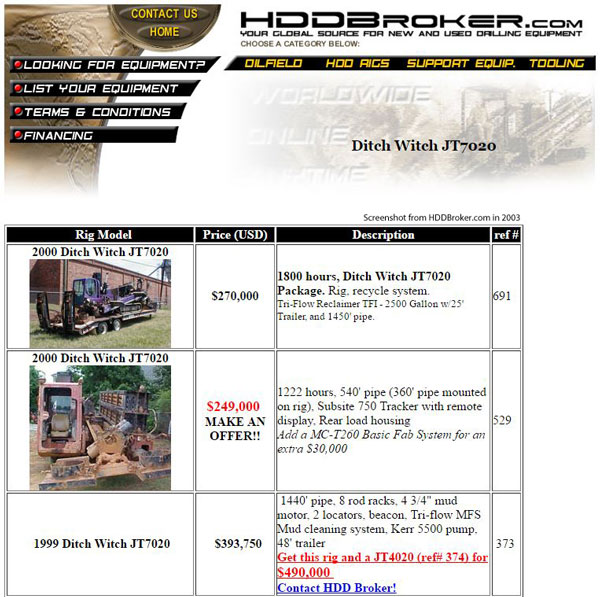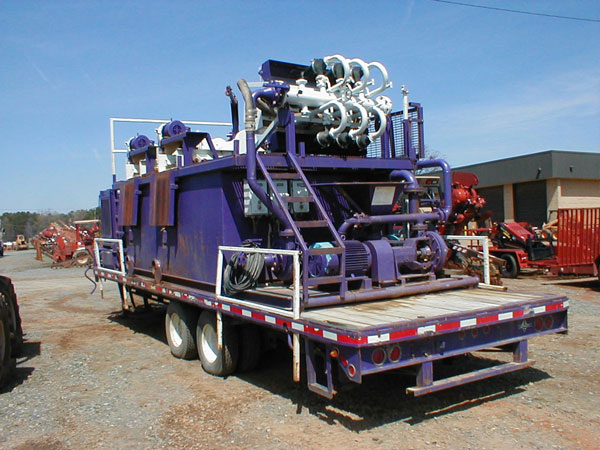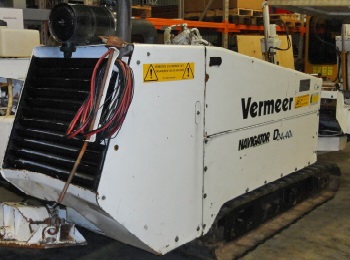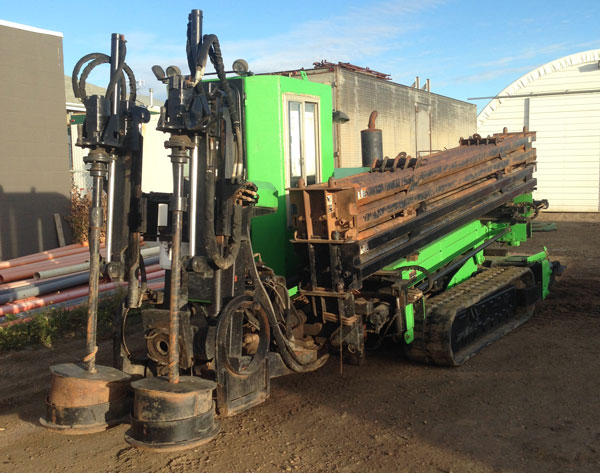What This Purple Drill Taught us About Resale Value
By Renée Lauzon-Martin - General Manager, HDD Broker LLC - March 17, 2016
It was a 2000 Ditch Witch JT7020 drill and it was purple. Bright, Barney-the-dinosaur purple.
The year was 2003 and the state of the used marketplace was rapidly changing. The fiber market crashed in 2001, destabilizing the industry, and putting tremendous downward pressure on drill pricing.
Nonetheless, a low-hour, 2-year old drill in this size category was still fetching a handsome price, somewhere from $249,000 USD all the way to the $390,000s. We listed it at $270,000, thinking it would sell quickly.
Only it didn't sell quickly.
It was a year on the market and the asking price plummeted to $190,000.
Even considering the depressed market at the time, JT7020's were still good sellers, but this price was definitely below fair market value.
Some folks simply couldn't get past the color.
It was the first repainted drill we saw on our site, but hardly the last. We've seen a range of company colors and favorite sport team colors - white, black, silver, racing stripes, even camouflage. And while a 42% drop in pricing is an extreme and rare example, we learned that repainting a drill can demonstrably effect its resale value.
Even when the unit is in otherwise good condition, a drill that has been re-painted a non-manufacturer color generally receives fewer website visits, raises more questions, and seldom sells in the upper-end of fair market value pricing.
Why? It's just paint right?
A few reasons. Some people are reluctant to accept another's company colors, and this is especially true if the paintjob has been done poorly or in an extreme color scheme. A mid-sized drill is roughly $5,000 to repaint, a considerable sum if the buyer wishes to revert back to brand-recognizable colors.
A re-painted drill tends to raise questions - why is it painted? Are there underlying issues? Buyers frequently bring a lower initial offer, citing the paint as the reason. We often hear that a repainted drill was ultimately selected only when the price was right, there were no other comparable options, or the buyer was convinced the drill was in excellent condition despite the paintjob.
Bottom line: Should you paint your drill? Sure. But to lessen the impact on the resale value, have it done professionally and select your color scheme carefully. Keep really good maintenance records so that when you are ready to sell, you can demonstrate that the paint is a cosmetic change and not an effort to hide flaws. And, please, don't paint your drill stem (we've seen it!), it's a waste of your hard-earned money.
And finally, in honor of St Patrick's Day today, I leave you with a green drill and an Irish toast:
Here's to a long life and a merry one.
A cold beer and another one!

This commentary is presented for informational purposes only. It is not intended to be a comprehensive or detailed statement on any subject and no representations or warranties, express or implied, are made as to its accuracy, timeliness or completeness. Nothing in this commentary is intended to provide financial, legal, accounting or tax advice nor should it be relied upon. Neither HDD Broker LLC nor the author is liable whatsoever for any loss or damage caused by, or resulting from, any use of or any inaccuracies, errors or omissions in the information provided.








